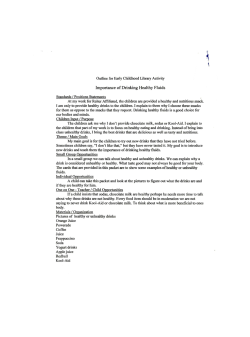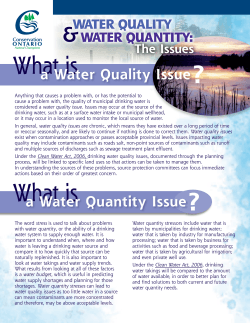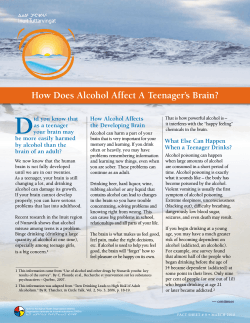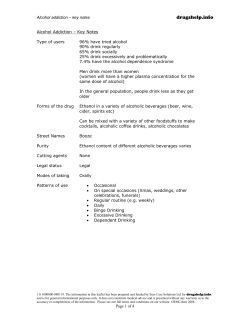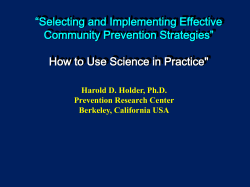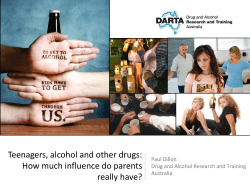
Document 239927
SBIRT Training Pre‐ and Post‐Test NOTE: For questions 1 through 4, a standard drink refers to a 12 oz. beer, 8‐9 oz. of malt liquor, a 5 oz. glass of table wine, 3‐4 oz. of fortified wine, or a 1.5 oz. shot. What is the maximum number of standard drinks that are within the low‐risk drinking range for a healthy 45 year‐old man? 1. NO MORE THAN ____ drinks per week (on average) a. 10 b. 12 c. 14 d. 20 2. NO MORE THAN ____ drinks per drinking occasion a. 1 b. 2 c. 3 d. 4 What is the maximum number of standard drinks that are within the low‐risk drinking range for a healthy, non‐pregnant 35 year‐old woman? 3. NO MORE THAN ____ drinks per week (on average) a. 4 b. 7 c. 10 d. 13 1 | P a g e 4. NO MORE THAN ____ drinks per drinking occasion a. 1 b. 2 c. 3 d. 4 5. Please identify what the 5‐letters in the AUDIT acronym stand for: a. Alcohol Use Disease Inventory Test b. Alcohol Use Disorders Identification Test c. Alcohol Use Disorders Inventory Test d. Alcohol Use Disease Inventory Training NOTE: For questions 6 through 8, please refer to the following scenario. You have just finished assessing your patient for alcohol use using the AUDIT, and have determined that he has had increasingly more trouble stopping drinking once he started. He describes feeling guilty or remorseful several times a week after a drinking episode, and has blacked out on more than one occasion. He recognizes that his drinking is a problem, and has tried without success to cut down over the past few months. 6. The best drinking goal for this patient is: a. Abstinence only b. Cutting down only c. Cutting down or abstaining are equally good goals 7. It is likely that this patient has: a. Risky drinking without alcohol dependence b. Alcohol dependence c. More information is needed to make a determination d. Neither 8. This patient would best be described as being in the following stage(s) of readiness to change his drinking: a. Determination/action b. Contemplation c. Pre‐contemplation 2 | P a g e 9. Primary care is a good place to do screening and brief intervention because: a. Most physicians routinely ask patients about their drug/alcohol use b. Patients expect primary care staff to ask about their drug/alcohol use c. Substance abuse involves many health risks d. B and C only e. All of the above 10. Brief interventions often include: a. Feedback about the client’s drug/alcohol use b. Advice on how to cut down on one's drug/alcohol use c. Motivational techniques d. A and B only e. All of the above 3 | P a g e
© Copyright 2025











